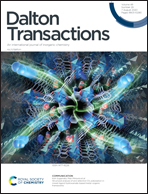On the limits of tuning comonomer affinity of ‘Spaleck-type’ ansa-zirconocenes in ethene/1-hexene copolymerization: a high-throughput experimentation/QSAR approach†
Abstract
For a set of 40 silicon-bridged C2-symmetric ansa-zirconocenes, reactivity ratios in ethene/1-hexene copolymerization were experimentally determined by means of an accurate high-throughput experimentation (HTE) approach, and used to develop quantitative structure–activity relationship (QSAR) models for comonomer affinity using chemically meaningful descriptors. These QSAR models rely almost exclusively on steric descriptors, with the single most important descriptor being the ‘openness’ of the open quadrants. Catalysts with an unobstructed main insertion pathway, i.e. without substituents affecting the open quadrant, show a remarkable insensitivity to further substituent effects, be it in 2-, 4-, 5-, 6- or 7-position or the bridge. We attribute this insensitivity to a shift in rate-limiting step for the comonomer incorporation, from insertion to olefin capture, with the latter being much less sensitive to modulation of the active pocket than the former. This indicates that our best incorporators are already close to the upper limit for comonomer affinity within this catalyst class.



 Please wait while we load your content...
Please wait while we load your content...